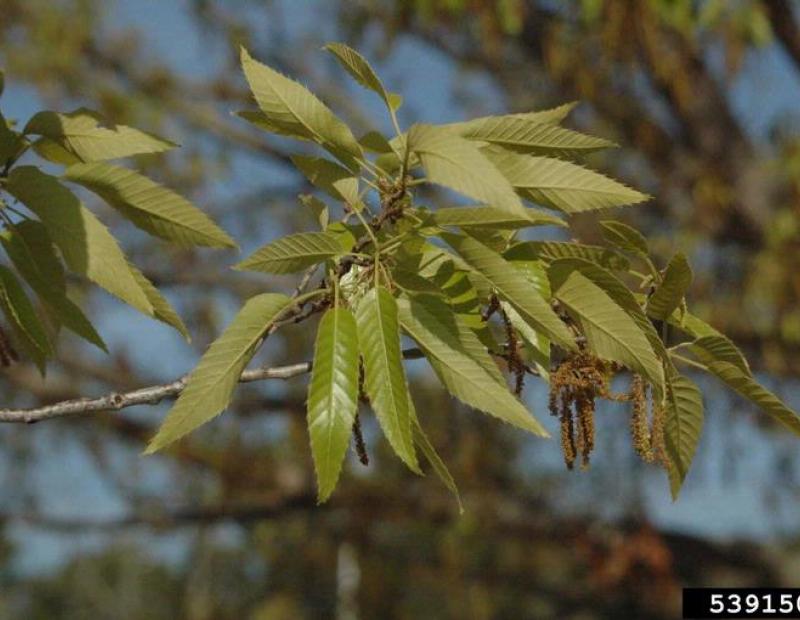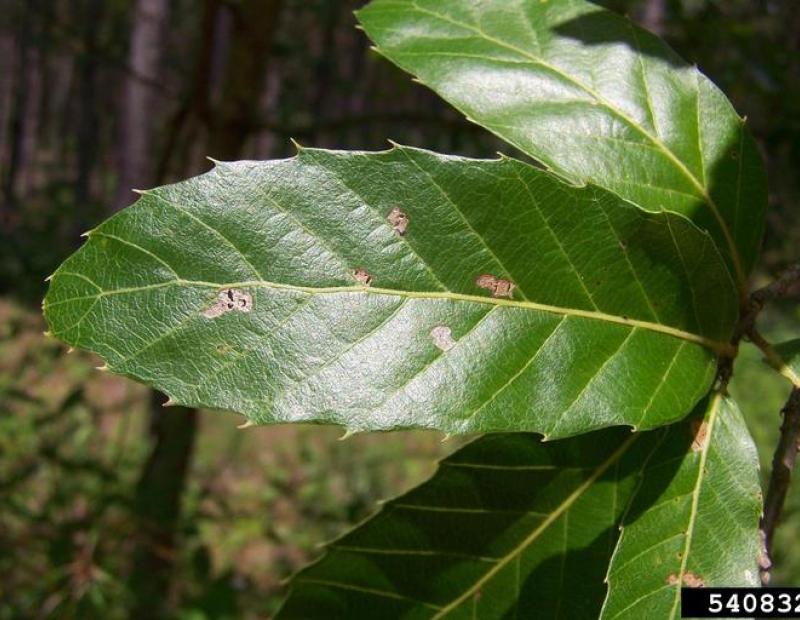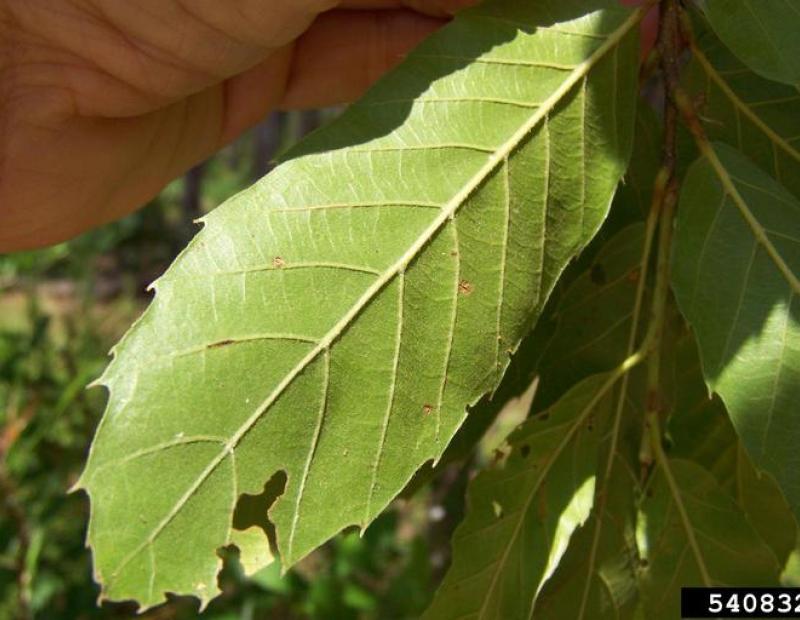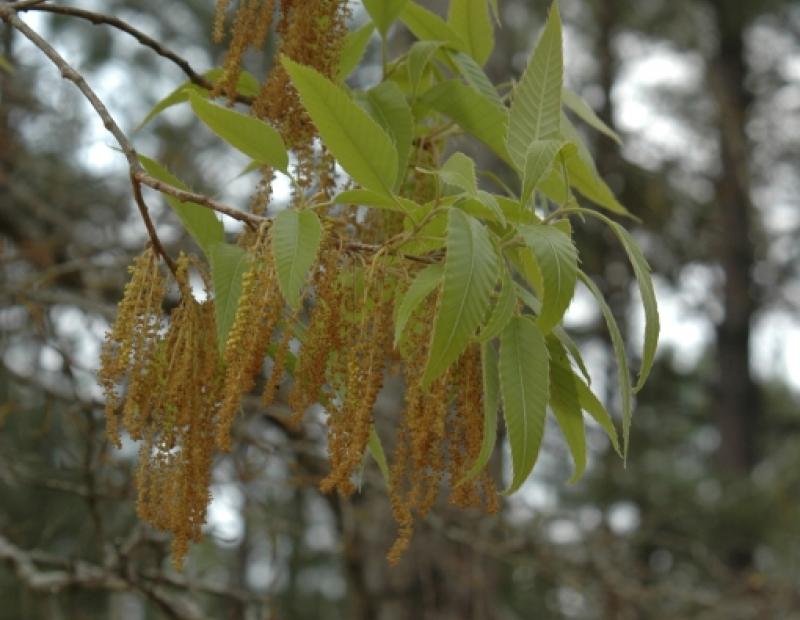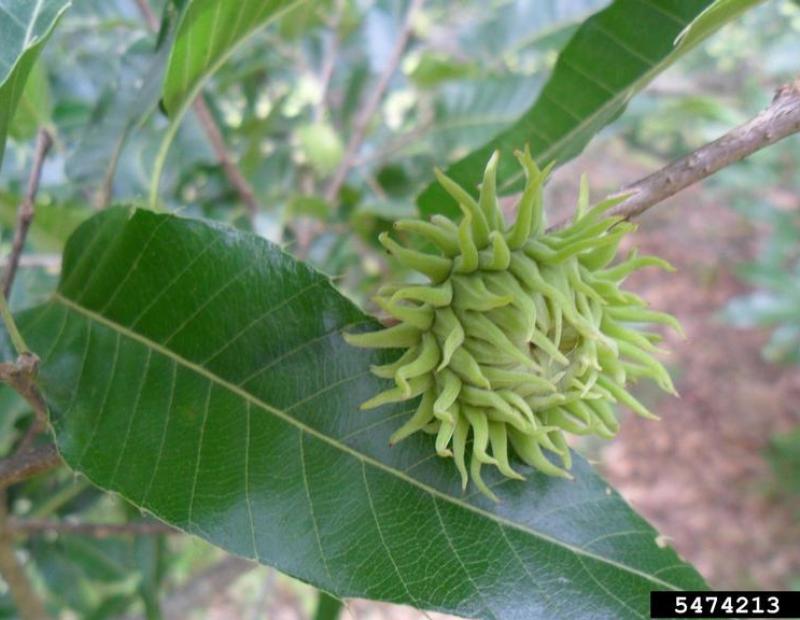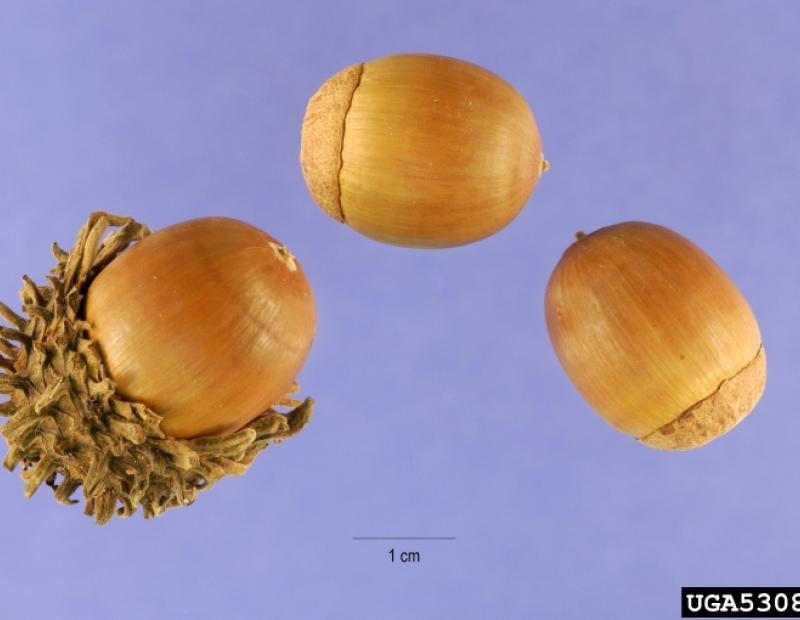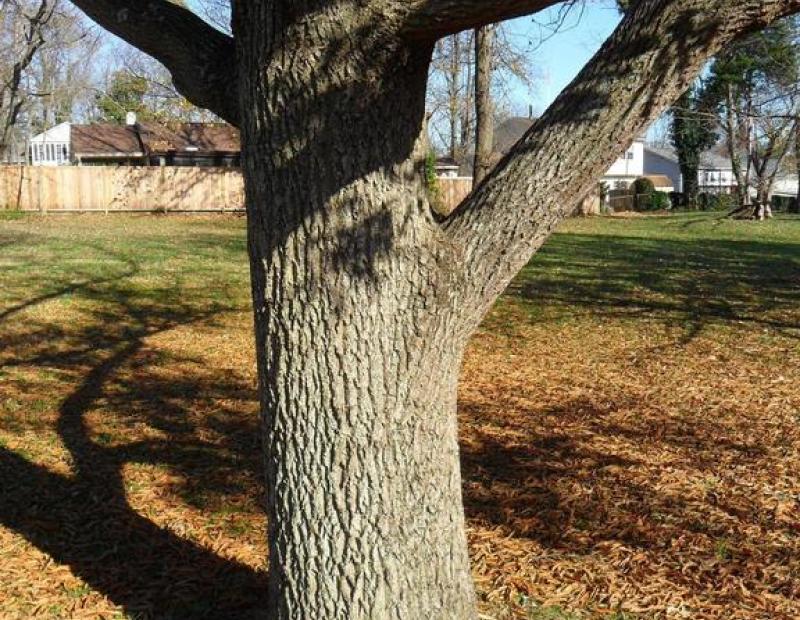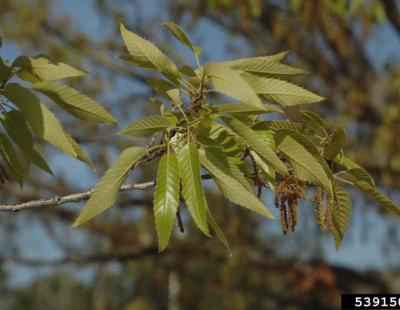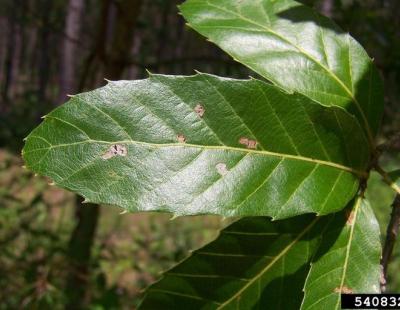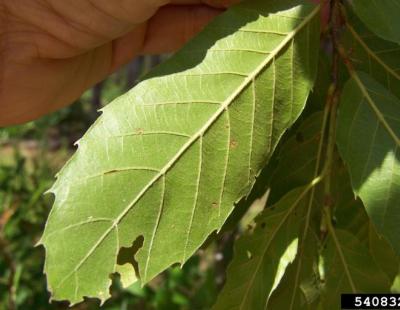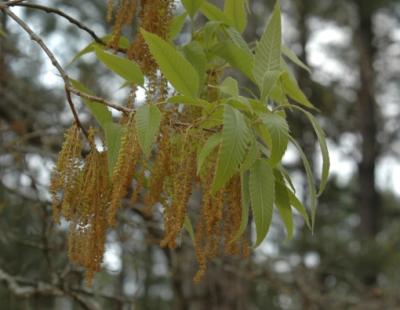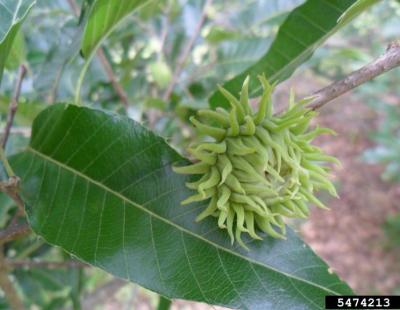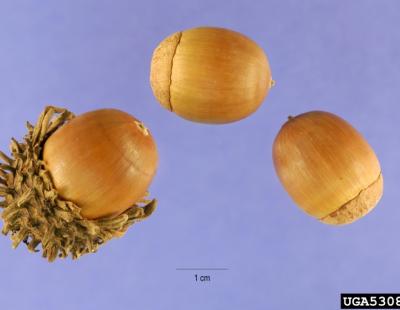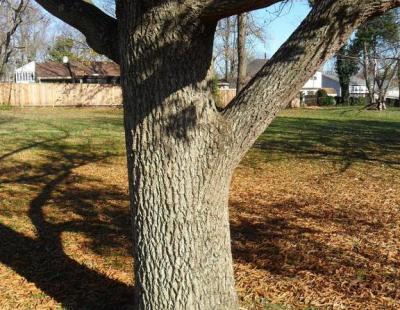Vertical Tabs
A tall, striking tree, sawtooth oak grows to 70 feet when mature. Producing fruit earlier in its lifespan than many other oaks, this species’ acorns are enclosed in a cup with long, spreading recurved scales. The tree’s leaves are similar in appearance to American chestnut. (2)
Leaves
Leaves are arranged alternately, and are broadly lance-shaped. Leaves are highly glossy with bristly teeth along the margins. (3)
Flowers
Flowers are wind pollinated pendulous catkins and largely inconspicuous. Flowers bloom in late spring. (2)
Fruit/Seed
Fruits are small acorns, enclosed within a cup covered in long, spreading recurved scales, somewhat similar to Bur oak (Quercus macrocarpa). (3)
As a relatively newly classified invasive, there has been little research conducted on the ecological impacts of sawtooth oak. A large, adaptable tree, the species is potentially capable of changing the composition of the habitats it invades by out competing other vegetation. However, evidence of this has not yet been recorded.
Biological Control
There is currently no single optimal biological control agent in use against this species.
Manual or Mechanical Control
Pulling / Digging Up: Pulling by hand as a control method is possible only if plants are young, and small. (5)
Mowing: Regular mowing of sawtooth oak appears to limit its establishment. (7)
Girdling: Best done in spring. If girdling is not accompanied by any means of chemical control, the managed population must be revisited to remove any root suckers.
Prescribed Fire: No information available
Prescribed Grazing: No information available
Soil Tilling: Not applicable
Mulching: Not applicable
Solarization: Not applicable
Hot Foam Spray: Not applicable
Chemical Control
The pesticide application rates and usage herein are recommendations based on research and interviews with land managers. When considering the use of pesticides, it is your responsibility to fully understand the laws, regulations and best practices required to apply pesticides in a responsible manner. At times, the pest you seek to treat may not be on a pesticide label, requiring a 2ee exemption from NYSDEC. Always thoroughly read the label of any pesticide and consult the NYSDEC or a licensed pesticide applicator with questions.
Foliar Spray: A 2% solution of glyphosate is effective as a foliar spray for small plants. When using herbicides, always follow the instructions on the label. (6)
Cut Stump: Cut stump herbicide application is an effective way of managing this tree. Plants should be cut in the fall or late summer. Apply a 20% solution of glyphosate to the stump to inhibit re-sprouting. (6)
Basal Bark: 25% solution of triclopyr applied July through September. (6)
Hack-And-Squirt
Stem Injection: Not applicable
Pre-Emergent Spray: Not applicable
General management overview and recommendation
As with any other invasive infestation complex, large stands are best managed via a combination of mechanical and chemical means. Small seedlings can be hand pulled or sprayed while larger trees must be controlled with a basal bark or cut stump application to attain good control. All managed infestations should be monitored to ensure exhaustion of the short-lived seed bank and to prevent reinvasion from nearby populations. Any new seedlings can be hand pulled.
Post treatment monitoring
Depending on the management method employed, controlled populations should be revisited throughout the growing season to monitor for re-sprouting, especially if mechanical methods such as cutting or pulling are used without herbicide application. Controlled populations known to have produced fruit should be surveilled every growing season to hand pull seedlings.
Disposal Methods
Waste material can be chipped, burned or composted.
REFERENCES
- https://www.invasiveplantatlas.org/subject.html?sub=10086
- https://plants.usda.gov/factsheet/pdf/fs_quac80.pdf
- https://www.invasiveplantatlas.org/subject.html?sub=10086
- https://gobotany.newenglandwild.org/species/quercus/cerris/
- http://www.forestry.ok.gov/Websites/forestry/Images/trees,oaksawtooth.pdf
- https://niipp.net/files/niipp/files/Herbicide_Manual_Final_Control_Matri...
- http://eol.org/pages/1151810/details

